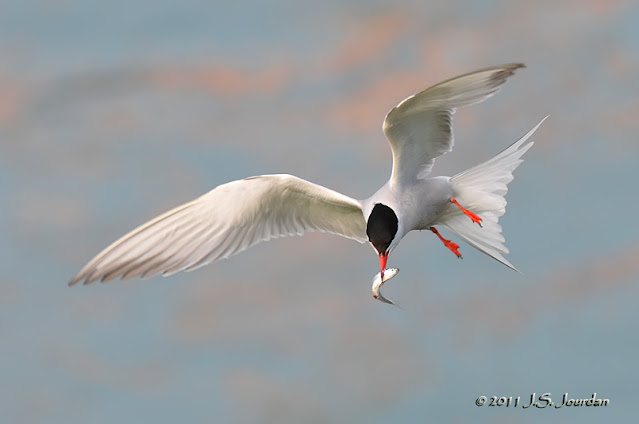On Sunday and Monday mornings I spent some time photographing the Common Tern colony on the Detroit River (below the span of the Grosse Ile Free Bridge in Wayne Co., MI). Day 1 was successful, but I got my proverbial photographer's-ass handed to me by the birds. Some serious adjustments needed to be made so that Day 2 could provide a bit of pay-back. Below is a summary of some of the issues I faced while trying to capture these gorgeous birds at their nesting site.
My equipment consisted of the following: Nikon D300s w/ the Nikon 300mm f2.8 VRII and TC14II teleconverter, a Nikon D300 w/ the Nikon 18-200mm f3.5-5.6 VR, and my digiscoping equipment: Zeiss 85T*Fl w/ 20-60X Zoom eyepiece, Nikon Coolpix P6000 and homemade adaptor.
Issue number 1 concerned the use of the teleconverter. Nikon shooters and numerous threads all agree that image quality and autofocus speed does not suffer w/ the TC14II on the 300/2.8 VRII. I'm gonna disagree (just slightly). Autofocus is fast; lightning-fast! But not quite fast enough to acquire and track terns whistling by as they forage and fight off other competitors (and photographers like me). Without the TC attached the 300mm f2.8 was brilliant, offering lightning-fast autofocus and able to follow the birds in flight! I was shooting at ISO 400, Aperture-Priority at f5.6-8 w/ exposure compensation at -0.3. Shutter speeds were plenty fast w/ or w/o the TC, so getting sharp images was never an issue. I found that the "naked 300" performed much more consistently, though, so I would return on Monday w/o the TC.
Issue number 2 concerned exposure. Nesting site under the Grosse Ile bridge consists of areas of bare gravel and rock, and areas of heavy emergent vegetation. While shooting at -0.3 exp. comp. I found that flight shots of the terns over water were providing exposures able to differentiate the gray breast and chest of Common Terns (one way of distinguishing them from the white chest and breast of similar-looking Forster's Terns).
Problems occurred when the gray and white birds passed over the green vegetation of the nesting site. Even with exposure compensation at -0.3 the camera wanted to expose for the green vegetation, boosting exposure compensation by as much as 2-full stops. The result was white-washed terns passing over properly-exposed vegetation. So I needed to go back on Monday and make sure that exposure compensation was set to at least -1.0 to -2.0 to avoid blown highlights in the birds.
Third issue involved digiscoping. Ever try to digiscope in an earthquake? Well, my issue wasn't necessarily an earthquake, but vibration on a suspension bridge with constant traffic rumbling by was a similar experience. I did ok on both days, but would have to prefocus on the terns (and chicks) and literally hold the shutter for minutes so that I could take exposures when vibrations settled. Quite nerve-wracking!
I was quite satisfied with my efforts, even on Day 1. But I learned a great deal about my equipment and my quarry that helped improve my efficiency on Day 2. I've uploaded my images to pbase so that you can see my efforts in the following slideshow:
Enjoy!
 |
| Click on image to start slideshow |
Grosse Ile Parkway, Wayne, Michigan, US
Jun 20, 2011 10:00 AM - 12:00 PM
Protocol: Stationary
Checklist Comments: Common Tern nesting platform under bridge
1 species
Common Tern (Sterna hirundo) 16 Adults, juveniles, hatchlings and eggs on nest.
View this checklist online at https://ebird.org/checklist/S164565558
This report was generated automatically by eBird v3 (https://ebird.org/home)












300MM F2.8 VR! Nice. But six pounds! Twice the weight of my seriously deficient 80-400MM. Are you using a tripod or hand holding?
ReplyDelete